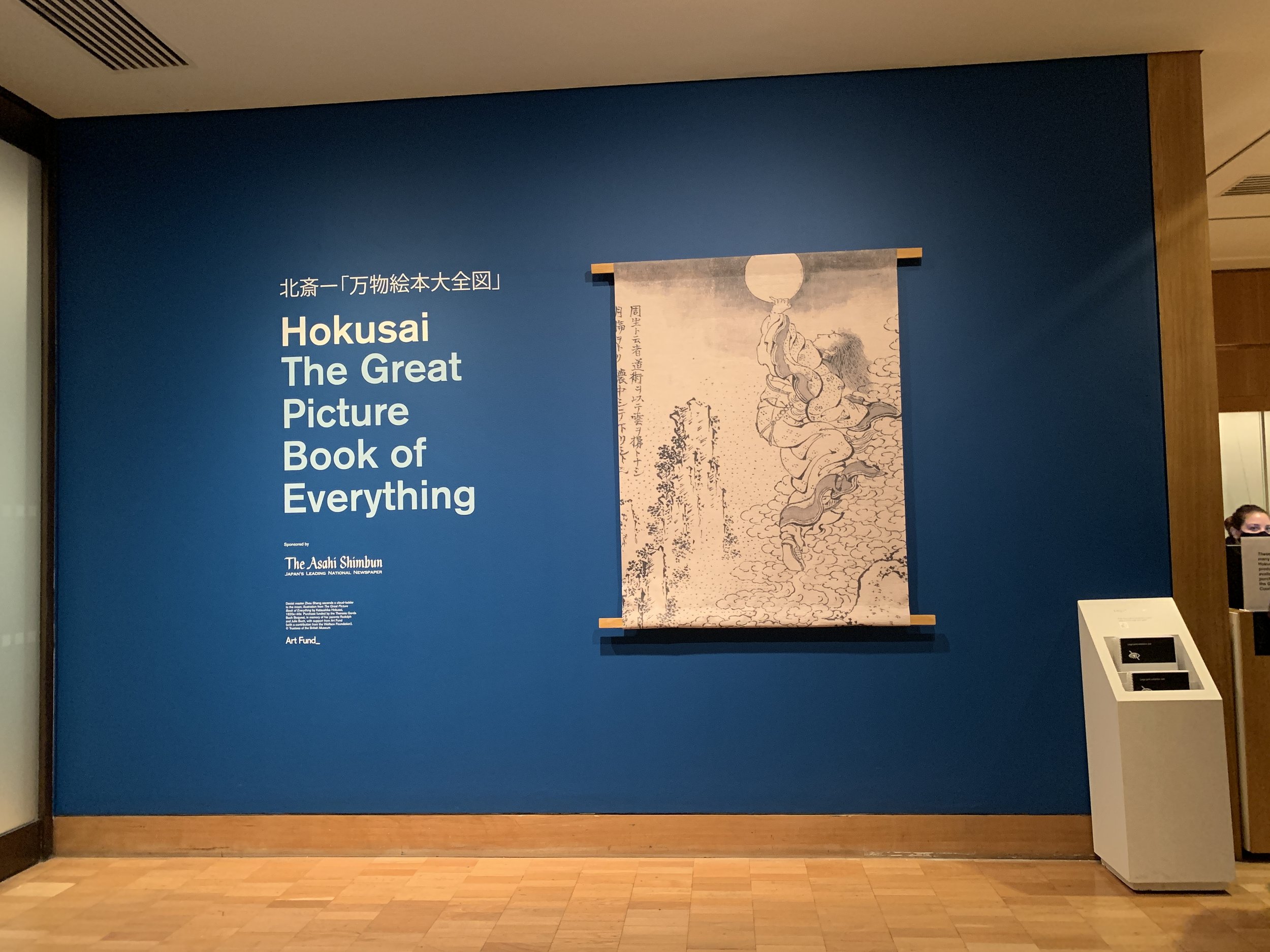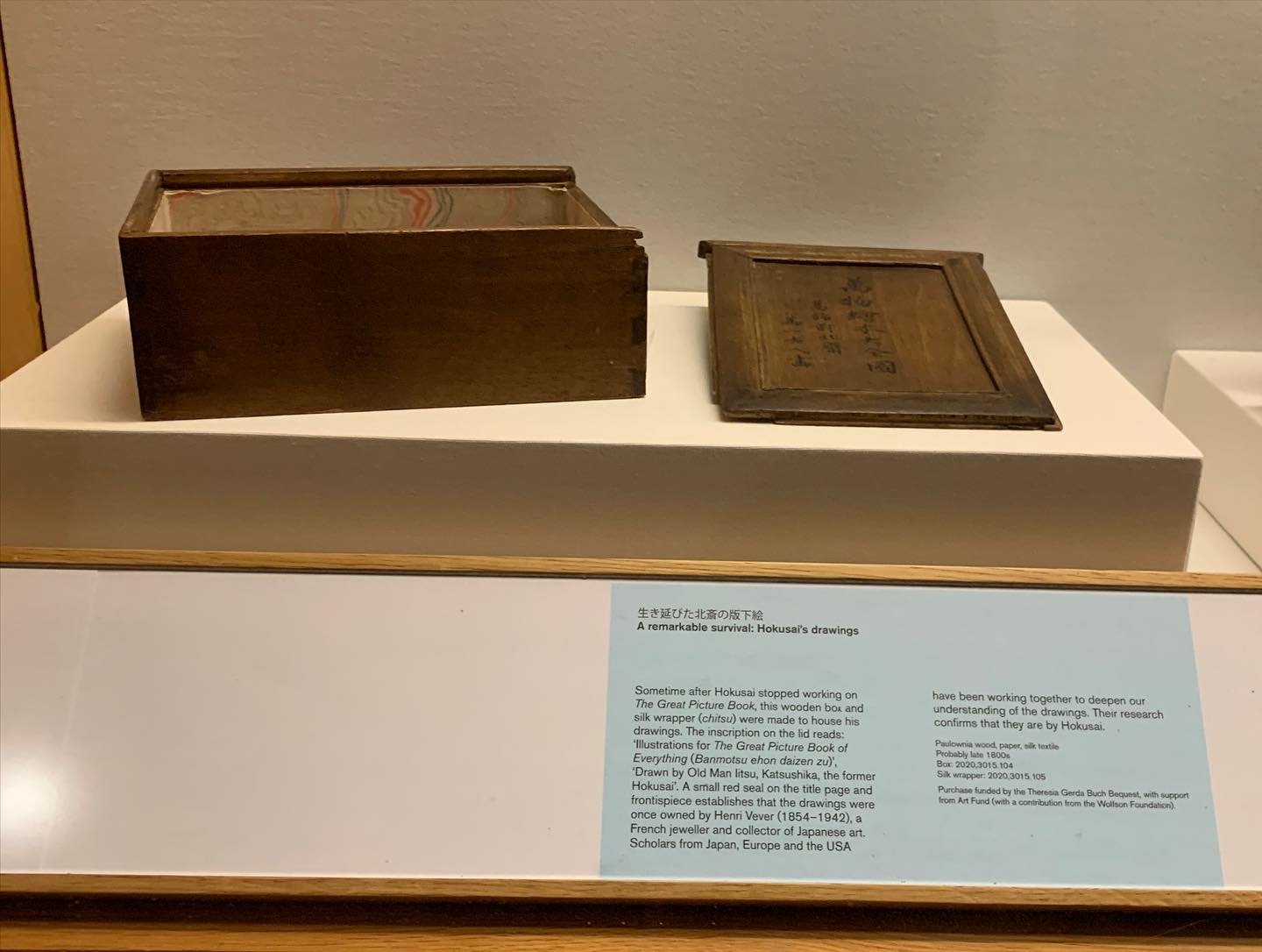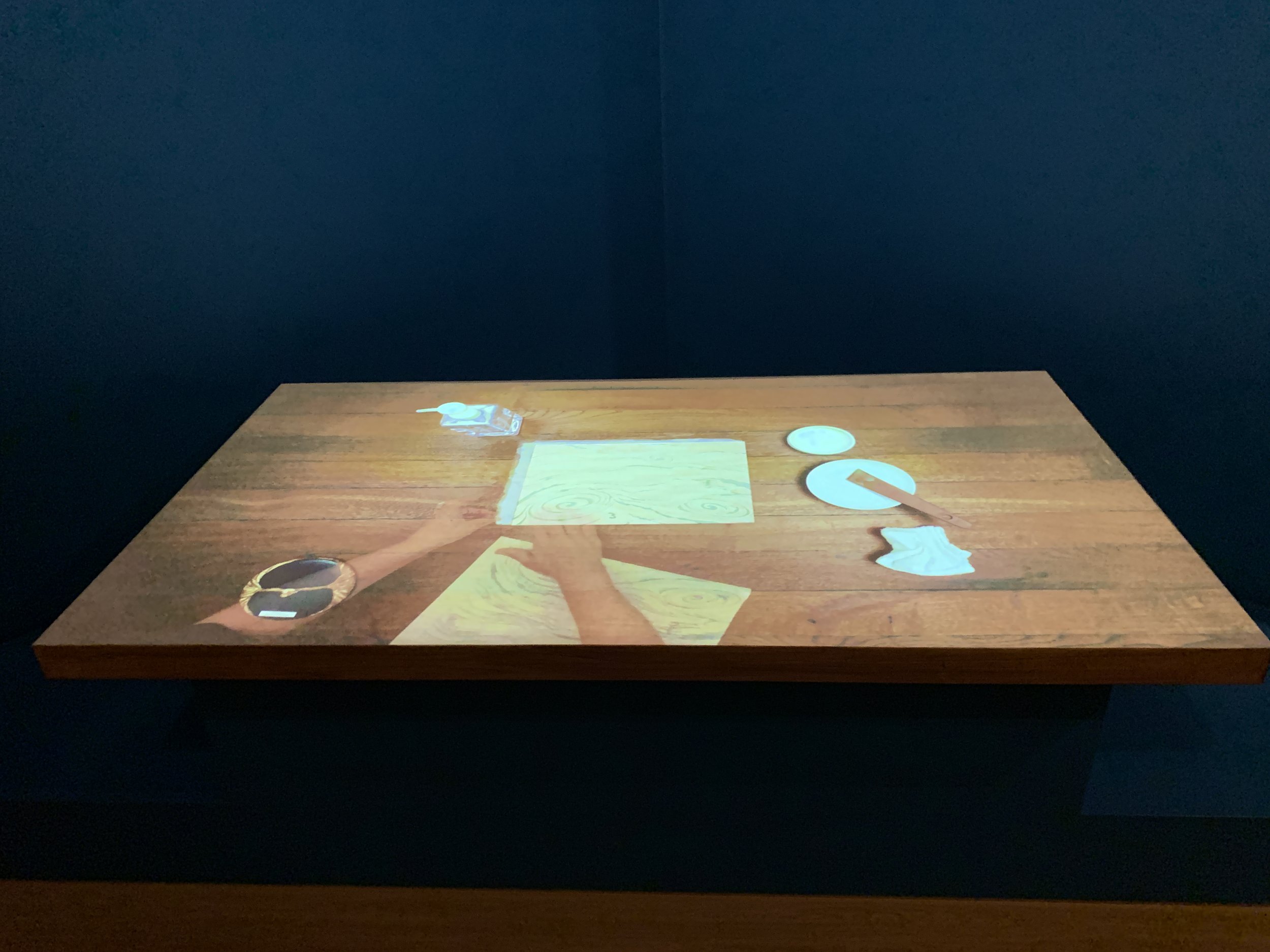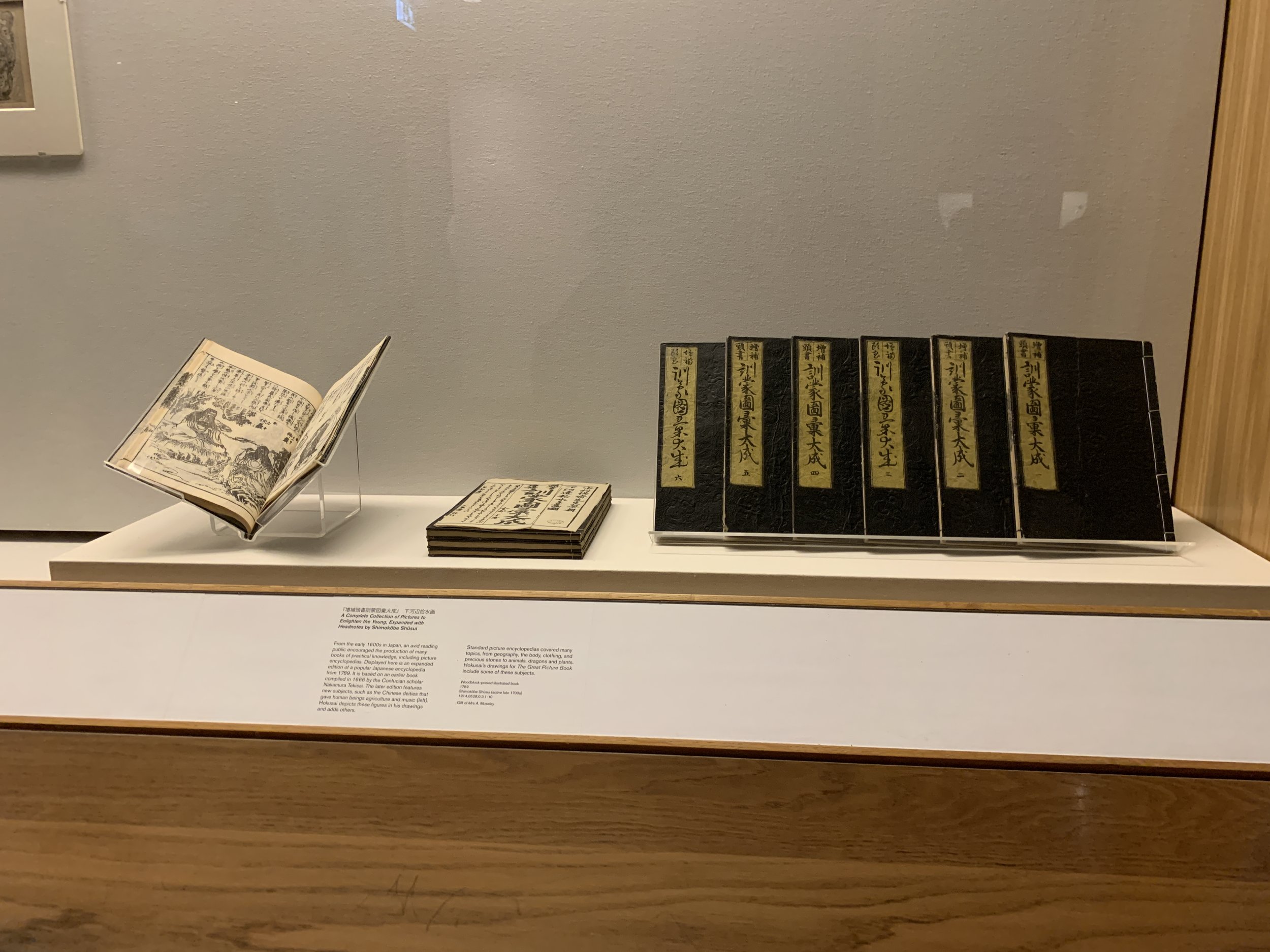British Museum Exhibition: Hokusai: The Great Picture Book of Everything
© Asha Bardon, 2021
On Monday, myself and our cohort and tutors got to go to a very special view of the British Museum’s latest exhibition, Hokusai: The Great Picture Book of Everything, which showcases 103 drawings by the artist Hokusai Katsushika (31 October 1760 – 10 May 1849) which were originally supposed to be published as a pictorial encyclopedia focusing on Buddhist iconography from China and India as well as nature.
This exhibition comes hot on the heels of the Hokusai: Beyond the Great Wave exhibition held in 2017 and is a special exhibition sponsored by the Asahi Shimbun newspaper. Rather than taking up the main exhibition space at the back of the Millennium Court, currently occupied by Peru: A Journey in Time, the Hokusai exhibition is being held on the fourth floor in a liminal space somewhere between the prints section and the Japanese art collection.
We were lucky enough to meet the curator, Alfred Haft, as well as being shown around the exhibition by Dr. Matsuba Ryoko. I was especially keen to meet Dr. Haft as I’ve been using his YouTube videos (posted below) to learn more about Hokusai but also the exhibition itself. Due to my visual impairment, I struggle with visual media, especially when things are framed or very small. However this exhibition was really well laid out, with a particularly lovely blue feature colour used to accent the space, probably based off of ‘The Great Wave off Kanagawa’ (1831). The space was open and had some nice circle-shaped partitions which made the space feel bigger than it was.
© Asha Bardon, 2021
© Asha Bardon, 2021
The exhibition was remarkable as it looked at both the drawings from the Great Picture Book of Everything but also the process behind how Japanese books were printed. I’ve been getting quite interested in the printing and book-making process and we were lucky enough to have a lecture with Dr. Ellis Tinios a few weeks ago, which included background reading on how woodblock prints were made. It also led me to spend the train journey down reading a book recommended to me by our tutor, Dr. Eugenia Bogdanova-Kummer, called Partners in Print: Artistic Collaboration and the Ukiyo-e Market by Julie Davis.
As well as showcasing all the 103 illustrations, and three variants on the Great Wave print, the exhibition also had a large table monitor on which a top-down video was projected of someone recreating a woodblock, a la one of those YouTube crafting videos, which put visitors into the shoes of a block-cutter. A nice feature which was coupled with a box with modern tools and a large piece of cherrywood, to give an idea of what was needed.
© Asha Bardon, 2021
© Asha Bardon, 2021
The exhibition also included a nice range of books, bound using traditional methods and a particular stitch similar to stab binding or coptic binding called yotsume toji. This is a stitch which splits books into for sections and has quite a wide binding margin, as well as using an open spine. I particularly love how all the books stick to an identical format of a nice, simply cover, obvious binding and a simple rectangle in the upper left corner in which the title and author is added.
The interesting part is that all these books were Hokusai’s.
Specifically identified as ‘drawing manuals’, Hokusai labeled them as manga, ‘random sketches’, these books are surprisingly well preserved given their age and fragility. Also the sheer amount of them; it’s quite striking for a man in his eighties to be so engaged in his medium but also producing content for mass publication.
© Asha Bardon, 2021
The final part of the exhibition was focused on the Great Wave, showcasing the other two variants in the Museum’s possession. These were exhibited to show the variation between early and later prints, as degradation and wearing of the woodblock, caused sections to disappear or colours to not print quite as crisply as the earliest prints.
This is something which can be seein the the two prints below:
© Asha Bardon, 2021
© Asha Bardon, 2021
This final area also included a screen with a looped video the British Museum did in Dr. Capucine Korenberg in November, talking about her research into the different version of the Great Wave. Finally, we could go up one flight to the Japanese art collection.
Dr. Matsuba did suggest we take a moment to visit the Six Stories exhibit before we left the museum, in which there is a particularly beautiful Tales of Genji-inspired glass piece by Yamamoto Akane called Leaf Boat (「一葉舟」). It was both a lovely exhibition but also a nice way to end the day and connect it to our studies and the various modules of our IJS MA.
Dr. Haft—who will be visiting Norwich on December 23rd to give the Third Thursday Lecture at SISJAC—has several videos on the Hokusai: The Great Picture Book of Everything exhibition are below, and the full playlist can be found here.











